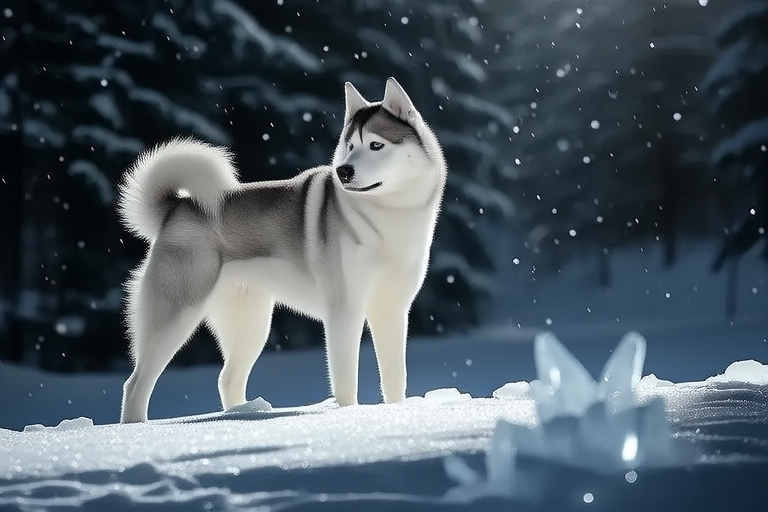Unleashing the Mystery: Everything You Need to Know About Siberian Huskies
Introduction
Siberian Huskies have captured the hearts of dog lovers around the world with their striking appearance and unique personalities. Known for their wolf-like features, these dogs are more than just eye candy; they are hardworking sled dogs with a rich history and specific care needs. This article will provide you with everything you need to know about Siberian Huskies, from their origins to their care requirements.
History and Origin
The Siberian Husky has its roots in Northeast Asia, specifically among the Chukchi people of the Chukotka Peninsula. These semi-nomadic tribes relied heavily on the Siberian Husky to pull their sleds across vast snowy terrains. The dogs were valued for their endurance, speed, and ability to thrive in harsh conditions. In 1908, the first Siberian Huskies were imported into Alaska, where they played a crucial role in the famous 1925 serum run to Nome, delivering life-saving diphtheria antitoxin to the remote town during a medical emergency. This event solidified the breed’s reputation as reliable and capable sled dogs.
Physical Traits
Siberian Huskies are medium-sized dogs with a distinctive appearance. They typically weigh between 35 and 60 pounds and stand at 20 to 24 inches tall. Their double coat is one of their most notable features, consisting of a soft undercoat and a coarser outer coat that provides excellent insulation against cold weather. The fur can come in various colors, including black, gray, copper, and white, often with striking facial markings that resemble a mask. Their eyes can be blue, brown, or even a combination of both, adding to their unique look. Despite their thick coats, Siberian Huskies are surprisingly light on their feet and possess a graceful, effortless gait.
Temperament
Siberian Huskies are known for their friendly and outgoing nature. They are generally good with children and other pets, though they may be less tolerant of smaller animals due to their hunting instincts. Their intelligence and independent streak can sometimes lead to stubbornness, making them a challenge to train. However, with patience and consistency, Siberian Huskies can be loyal companions. They are social dogs that thrive on human interaction and enjoy being part of a family. It’s important to note that their strong prey drive means they should always be supervised around small animals.
Exercise Needs
Siberian Huskies are an active breed that requires regular exercise to maintain their physical and mental well-being. They have a high energy level and are natural runners, so daily walks or runs are essential. If possible, providing opportunities for them to pull a sled or participate in other dog sports can help satisfy their need for activity. Without adequate exercise, Siberian Huskies may become restless and exhibit destructive behaviors. It’s also worth noting that they are pack animals and prefer to be included in family activities.
Dietary Requirements
Feeding a Siberian Husky requires attention to their nutritional needs. High-quality dog food that meets their energy requirements is crucial. Look for food that is rich in protein and fat, as these nutrients are vital for maintaining their muscle mass and overall health. It’s important to monitor their weight and adjust their diet accordingly to prevent obesity. Fresh water should always be available, especially in warmer climates, as they can be prone to dehydration despite their thick coats.
Health Issues
While Siberian Huskies are generally healthy dogs, they are susceptible to certain genetic conditions. Common health issues include hip dysplasia, which affects the hip joint, and progressive retinal atrophy, a condition that can lead to blindness. Other concerns include cataracts, corneal dystrophy, and hypothyroidism. Regular veterinary check-ups and a balanced diet can help manage these conditions. Early detection and treatment are key to ensuring a long and healthy life for your Siberian Husky.
Grooming Tips
Grooming a Siberian Husky involves more than just brushing their coat. Their thick double coat requires regular maintenance to prevent matting and keep their skin healthy. Brushing them several times a week, especially during shedding seasons, is recommended. Bathing should be done only when necessary, as over-bathing can strip their coat of natural oils. Additionally, paying attention to their nails, teeth, and ears is important for their overall hygiene. Using appropriate grooming tools and products designed for double-coated breeds can make the process easier and more effective.
Training Techniques
Training a Siberian Husky requires a firm yet gentle approach. Due to their independent nature, positive reinforcement methods work best. Rewarding desired behaviors with treats, praise, or playtime can encourage them to follow commands. Consistency is key, as they can easily become confused if the rules change frequently. Socialization from an early age is also important to ensure they grow up to be well-behaved adults. Enrolling them in obedience classes can provide structured training and help build their confidence.
Common Myths
There are several misconceptions about Siberian Huskies that potential owners should be aware of. One common myth is that they are suitable for all living environments. While they can adapt to different climates, they do best in cooler temperatures and may struggle in extremely hot conditions. Another myth is that they are easy to train. Their intelligence and independence mean they require patient and consistent training. Lastly, some people believe that Siberian Huskies are naturally aggressive. In reality, they are generally friendly and affectionate, though proper socialization is still necessary.
